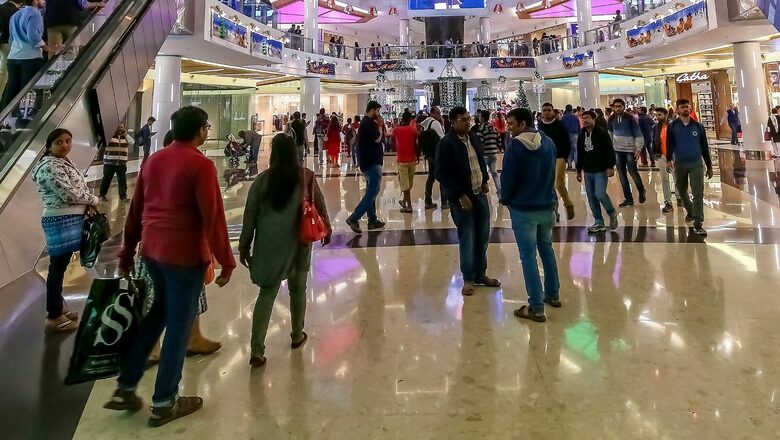
views
Meet Shivam Srivastava. A 25-year-old MBA student at the Narsee Monjee Institute of Management Studies, Mumbai, he is a self-confessed buy-now-pay-later (BNPL) “addict”.
“I spend up to Rs 15,000 every month via apps like Simpl. With BNPL, payments are really just one tap. I pay for my food and groceries online in a blink. Even paying back somehow feels easier, with my UPI linked to the app. Plus, they also give multiple payback reminders on WhatsApp. That reminds me to spend wisely. For me, BNPL has a serious edge over traditional credit cards,” he says.
Srivastava is just one amongst the approximately 25 million individuals in India, mostly millennials, who are increasingly opting for the ease of BNPL over their usual credit cards.
Fuelled by their force, Goldman Sachs estimates that the Indian BNPL market is on the cusp of exponential growth. According to GS, BNPL currently forms 2% of the total retail spending, a number expected to burgeon to 7% in the next four years. This is when India’s BNPL market was relatively nascent till last year, valued at only between $3.5–4 billion, according to Redseer.
A 2021 PwC report shares similar bullish sentiments on India’s BNPL market. Estimating a CAGR of 67%, the consulting behemoth foresees India’s transaction volume in the BNPL space touching 2 billion by 2026, along with their value surging to Rs 3,191 billion.
But still, why BNPL?
Instantaneousness and convenience, notes Srivastava. Essentially, the idea behind BNPL is to push a consumer’s immediate financial outreach and liquidity. Then, they can pay back in interest-free instalments over the next 1-3 months, depending on the lender. Most of these loans are, however, taken in sachet-esque amounts. That’s why they end up scoring very big in the short-term, small-loan segment (i.e where credit amount For Krunal Hrindani, who works as a consulting editor for UK-based Carhoots, the main reason to use BNPL is to extend his credit line. “For BNPL apps, my monthly payments would be in the neighbourhood of Rs 3,000-5,000. In fact, I just paid my Simpl bill worth Rs 3,000 yesterday. “ “The main reason why I use these apps is that they let me push my payment liability. I can pay off all this in cash, that’s not a problem, but if it lets me maximise my credit period, why not? BNPL usually gives me 45 days of interest-free credit, so I pay everything off then,” he continues Srivastava concurs. “In addition, I love the unconventional features, simplicity, and cool, user-friendly interface that these apps offer. For instance, you can just swipe to pay, instead of the traditional OTPs. Before RBI’s guidelines came into effect, Uni and Slice also allowed us to split our payments into three parts without additional charges. This focus on consumer value is also what drives millennials towards BNPL services.” He is talking about the RBI directive that currently bars non-bank fintech players like Slice, Uni, and LazyPay to extend credit via their prepaid payment instruments, like cards and wallets. Slice and Uni were particularly popular for their services where they allowed users to defer payments in two or three interest-free instalments. Says Pritesh Jagtap, a Noida-based content associate at LearnApp, “I generally use BNPL apps like LazyPay for ordering food on Zomato and Swiggy. I also have a Slice card I used extensively until a few months back. One click, one swipe, and my order is placed. In contrast, credit cards demand inputting OTPs, and CVVs, which feel tedious for placing an order worth small amounts like Rs 500-1,000. Plus, I get good offers.” Naturally, BNPL is sticking, and strongly so. Interest-free, immediate loans with easy repayment options have caught the fancy of many millennials. But there is one specific area where these loans are thriving.Watch what you eat. Or not
A 2018-19 report by the National Restaurant Association of India (NRAI) highlights a new category of millennials that is accelerating the food business and unconsciously, BNPLs too: worn-out, young city dwellers.
Aged between 25 and 35, they are urban working professionals who battle the stress of city life and living away from family on a daily basis. This was only exacerbated by the perils of the pandemic in the last 2-3 years. As per NRAI’s findings, this category spends about Rs 2,746 every month on average, eating outside or ordering in. Such is the pace that they also venture out to eat about 6.6 times a month.
That might explain why a lion’s share of the market, i.e about 38% in most BNPL apps, is of partners associated with food. But that’s not all. When it comes to shopping too, the trend of buy-now-pay-later has captured a solid market.
Yumna Ahmad is a PR professional working at OP Jindal Global University, Sonipat. High on wellness and skincare, she regularly uses the BNPL services of Simpl and LazyPay to avail of offers at SkinKraft, Purplle, and more.
“I actively use Amazon’s Buy Now Pay Later, too. I have a credit card, but there are many times when other payments like loan EMIs, and even SIPs are lined up via my card. In such a situation, BNPL lets me shop with ease, without disturbing my financial health,” she says.
But that doesn’t mean that credit cards are losing their mojo. According to RBI data, India saw 1.8 million new credit cards issued in June 2022, taking their total circulation to 78.7 million. Spending, too, has been consecutively topping trillions for the past five months. In fact, people spent about $1.16 trillion via their credit cards just in June 2022.
But this is coming from a relatively smaller lot. Consider this— there are only 30 million unique credit card users. That means only 3.33% of 900 million banked Indians with access to credit via this means. At 5.5%, credit card penetration in India still remains low, about 1/9th of the country’s UPI usage.
Then there’s the case of scale. Nilesh Maurya, an investment banker with Mumbai-based Omega Capital Consultants, uses BNPL apps frequently, despite having 16 odd debit and credit cards.
“I believe that for all transactions up to Rs 5,000, BNPL works perfectly. Over and above that, credit card works better,” he says.
Even Hrindani agrees. “Across all my credit cards, I spend anywhere between Rs 7,500-20,000 per month. This includes all purchases on Amazon and any major buys like a laptop, appliances, and more.”
Read all the Latest Business News and Breaking News here




















Comments
0 comment